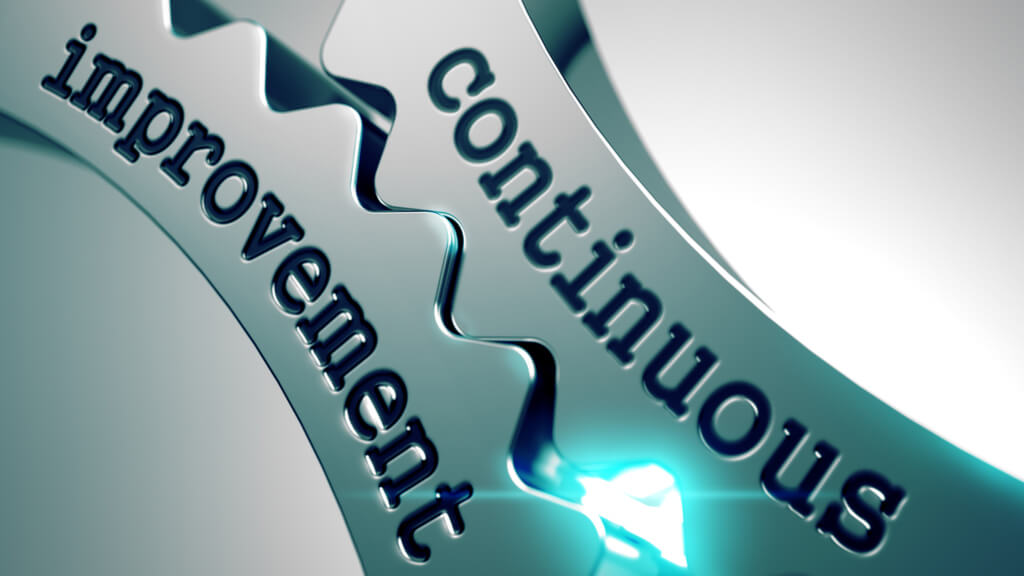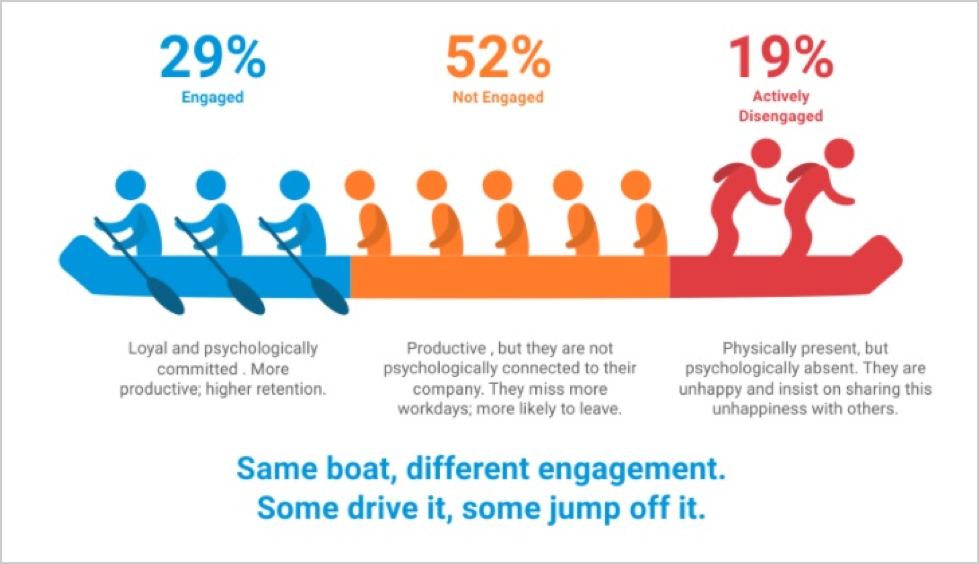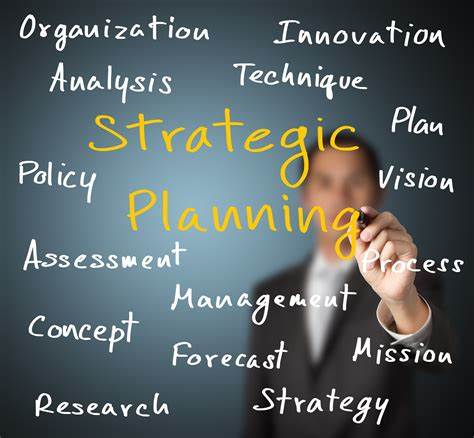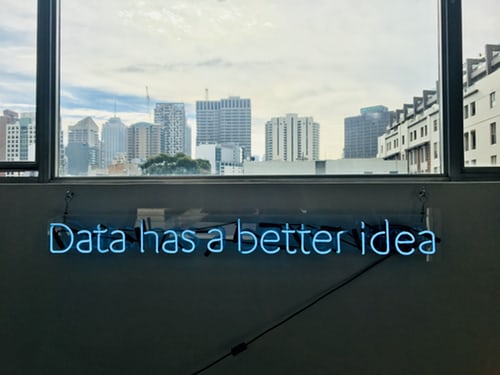
Non-profit organizations are committed to supportive environments, celebrating diversity, cultural humility, educational development for children, and empowering families. They foster individualized and personalized relationships with clients and communities to develop a continuum of care for all people. Nonprofits achieve these feats because they employ dedicated, passionate members who are deeply committed to the mission. Unfortunately, deep commitment does not always translate into best practices for an organization, nor does this commitment always fulfill client needs. Addressing the gap between commitment and performance begins by moving from a culture of compliance to a culture of continuous improvement.
Continuous improvement is a journey that rests on three essential components:
1) Engaged employees.
2) A clear plan with shared goals
3) A reliance on data to inform decisions
Engaging Employees

Employee engagement is much more than job or work satisfaction. It’s the strength of emotional and mental connection workers feel towards their jobs, team, and organization. Engaged employees are highly motivated, perform better, and are connected to the organization’s core mission.
Employee engagement is tied directly to the level of involvement, connections between individuals, and the amount of respect, value, and recognition accorded to them. Workers feel valued at the workplace if they can build excellent professional relationships and get positive reinforcements, alongside sufficient compensation. Earning living wages is crucial to employee engagement.
Proper resource provision is also necessary to create an engaged workforce, but many nonprofits fail to deliver on this front. Organizations can ignore paperless technology, operate in cramped offices, and don’t provide adequate office supplies. Even when running on a tight budget, investing in employee resources should be a primary concern because it can improve employee engagement and performance.
Gallup came up with “The Q12 Survey,” a simple and effective blueprint to improve worker engagement after studying over 2.7 million workers across 100,000+ teams in different organizations. This blueprint highlights the 12 managers need to use to enhance employee engagement.
The Q12 Survey
The 12 questions that make up the items on Gallup’s engagement survey reflect employees’ fundamental needs at work. These questions are:
- I know what is expected of me at work.
- I have the materials and equipment I need to do my work right.
- At work, I have the opportunity to do what I do best every day.
- In the last seven days, I have received recognition or praise for doing good work.
- My supervisor, or someone at work, seems to care about me as a person.
- There is someone at work who encourages my development.
- At work, my opinions seem to count.
- The mission or purpose of my company makes me feel my job is important.
- My associates or fellow employees are committed to doing quality work.
- I have a best friend at work.
- In the last six months, someone at work has talked to me about my progress.
- This last year, I have had opportunities at work to learn and grow.
Measuring Employee Engagement

Gallup’s research found a 2% decrease in global employee engagement from 2019 to 2020. The drastic measures to curb a raging pandemic led workers to experience more stress, anger, worry, and sadness. School and work closures, social distancing and isolation, remote work, and zoom fatigue took their toll on people’s wellbeing.
Gallup maintains that physical health, financial stress, and community factors impact the involvement of employees. Gallup argues that organizations can help employees become resilient and thrive under adverse conditions.
The percentage of workers who are actively disengaged hovers around 20%. An actively disengaged employee complains, gossips, and is rude to coworkers and clients. Actively disengaged employees are both toxic and contagious.
Nonprofit organizations need specific strategies to engage the nonengaged employees without neglecting your already engaged employees. The best engagement strategies focus on resources, connections, recognition, and growth.
Planning Strategically

Strategic planning is core to improving engagement and providing excellent service. Strategic planning allows nonprofits to move beyond platitudes. Focused and involved planning engages employees across the entire organization.
It enables you to form cross-department committees with employees drawn from all levels of the organization. The committees can drive the conversation about the mission, the wildly important goal, and the strategies.
Strategic planning empowers the employees to determine what to implement and how. For example, through a consensus model, employees may decide the organization needs to become trauma informed. They could pick a consultant or training firm, determine the necessary resources, and even when to do training. While an initiative will fail without commitment from the leaders, it is equally likely to fail without widespread employee engagement.
Many nonprofits struggle with too many goals. The best organizations focus on one wildly important goal aligned with their mission. Having too many goals is ineffective, and Covey recommends concentrating much of your effort on one (or two) wildly important goals.
Look at what will impact the organization the most while meeting your client’s greatest needs. Make that your wildly important goal, and all the other pieces will fall into place.
Implementing a wildly important goal requires accountability, and the 4 Disciplines of Execution (4DX) can help you bridge this gap. The 4DX approach is based on timeless, universal principles of human effectiveness. It recommends creating a compelling scoreboard and holding accountability meetings.
A compelling scoreboard is simple, visual, visible, and continually updated. It makes it easy to engage your employees in determining what the scoreboard will look like and what it will measure. Your scoreboard will tell you at a glance where you are in your journey. Accountability meetings are short (less than 30 minutes) and focus on reporting progress towards goals.
Deciding with Data

Once your engaged employees have created a mission statement, a wildly important goal, and designed a scoreboard, it’s time to analyze the data. Many nonprofit organizations collect and report data as part of funding requirements. Unfortunately, most fail to leverage these data for continuous improvement.
While pie charts, bar graphs, and tables are helpful when displaying important data, trend lines are even better. They let you determine how strategies impact outcomes and choose the most effective strategies for your nonprofit. Detailed analysis such as breaking the data down by gender and sexuality, race and ethnicity, native language, and citizenship status offers profound insights.
But data analysis requires your staff to have high data proficiency. Luckily, you can improve data literacy through training and practice. Regular, daily practice will improve and enhance data analysis skills and abilities. The daily practice also reduces the discomfort of working with data while building proficiency.
Data literacy is as essential as reading and writing, but we face a significant skills gap. Several excellent organizations are devoted to helping your staff become data literate, including QLIK and Data Literacy. Just as you are committed to providing resources such as time, office space, and technology, you can provide training in data liter
